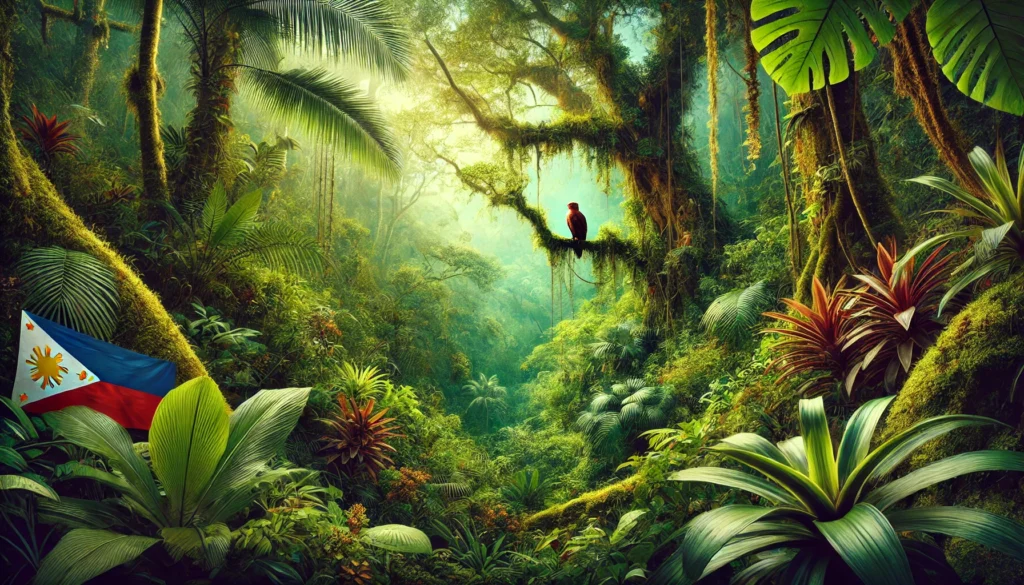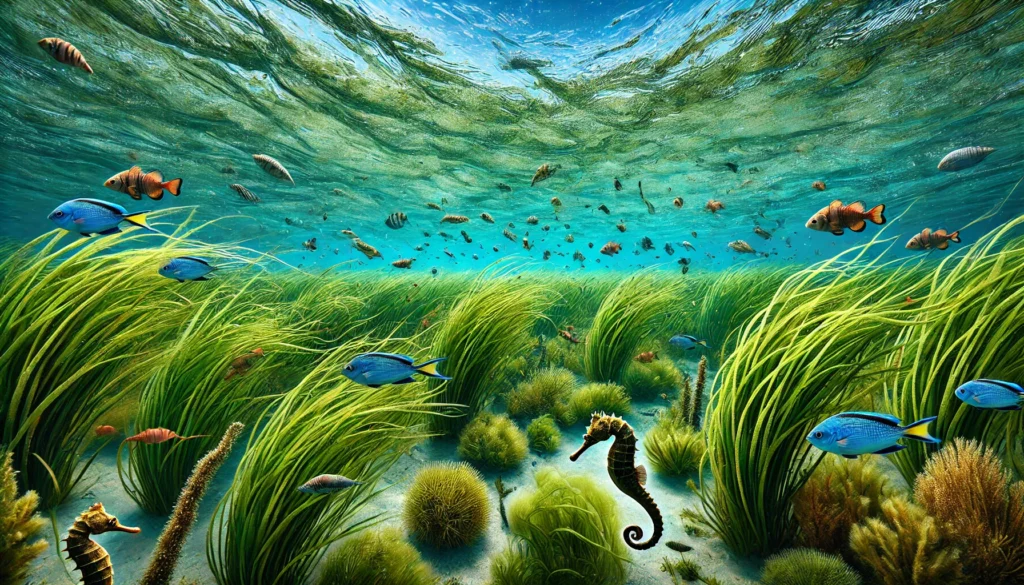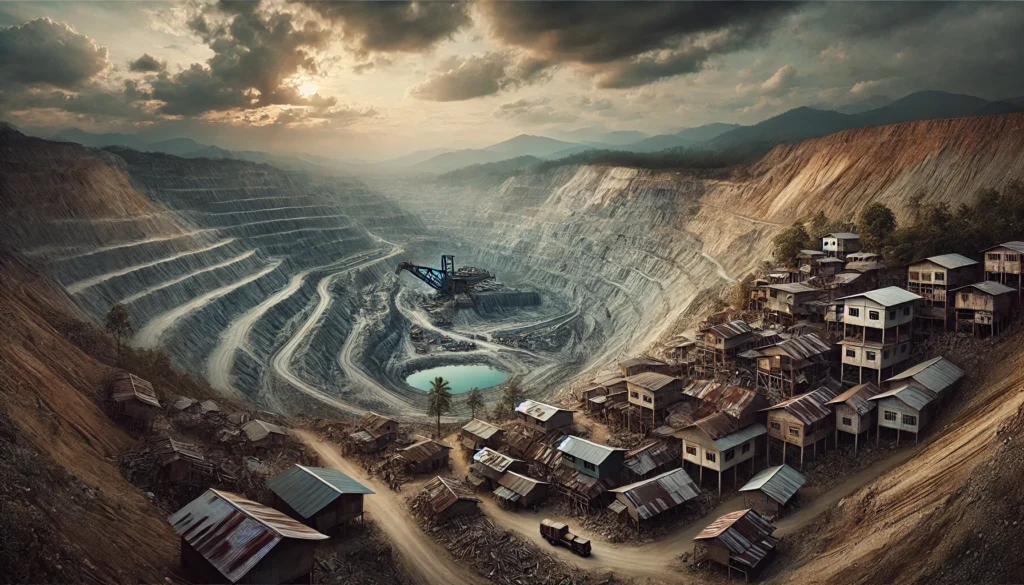Hey there, nature enthusiasts and curious cats! Buckle up, because we’re about to embark on a wild ride through one of the most biodiverse places on Earth. No, we’re not talking about your grandma’s overgrown garden (though that’s probably pretty diverse too). We’re diving into the lush, vibrant, and downright mind-blowing world of the Philippines!
A Tropical Paradise with a Twist
Picture this: 7,641 islands scattered across the western Pacific Ocean like a handful of emeralds tossed by Mother Nature herself. That’s the Philippines for you – a country so fragmented, it makes a jigsaw puzzle look simple. But don’t let the complexity fool you; this archipelagic wonder is a biodiversity hotspot that’ll make your head spin faster than a tarsier spotting its dinner.
Why so special, you ask?
Well, imagine evolution as a mad scientist, locked away in a laboratory for millions of years. The Philippines is that laboratory, and boy, has it been busy! The isolation of these islands has led to an explosion of unique life forms found nowhere else on Earth. It’s like Nature’s own exclusive designer boutique, where every species is a limited edition.
The Numbers Game: Biodiversity by the Digits
Now, I know what you’re thinking: “Sure, it sounds impressive, but show me the money!” Ask, and you shall receive, my fact-hungry friend. Let’s dive into some mind-boggling numbers that’ll make your local zoo look like a backyard chicken coop.
| Category | Number of Species | Endemic Species |
|---|---|---|
| Plants | 14,000+ | 6,000+ |
| Mammals | 240+ | 100+ |
| Birds | 700+ | 230+ |
| Reptiles | 270+ | 160+ |
| Amphibians | 110+ | 80+ |
| Freshwater Fish | 330+ | 80+ |
Take a moment to pick your jaw up off the floor. Yes, you read that right. The Philippines is home to more than 14,000 plant species, of which over 6,000 are found nowhere else in the world. That’s like having 6,000 plant species that decided to ghost the rest of the planet and set up their exclusive club in the Philippines.
And let’s not forget our furry, feathered, and scaly friends. With over 240 mammal species, 700 bird species, and a combined total of nearly 400 reptiles and amphibians, the Philippines is like a real-life Pokémon game. Gotta catch ’em all? More like gotta protect ’em all!
The VIPs (Very Important Philippinos)
Now that we’ve bombarded you with numbers let’s put some faces to these statistics. It’s time to meet some of the stars of this biodiversity show – the unique creatures that call the Philippines home.
The Philippine Eagle: The Feathered Heavyweight Champion
First up, we have the Philippine Eagle, also known as the Monkey-eating Eagle. Don’t let the name fool you; this bird isn’t picky and will eat pretty much anything it can get its talons on. Standing at up to 3 feet tall with a wingspan of up to 7 feet, this majestic bird is the feathered equivalent of a fighter jet. It’s the national bird of the Philippines and, let’s be honest, probably the coolest thing to ever grace a peso bill.
The Tarsier: Nature’s Own Googly-Eyed Plush Toy
Next on our list is the Philippine Tarsier. Imagine if Yoda and Gizmo from Gremlins had a baby, and you’re pretty close to picturing this adorable creature. With eyes bigger than its brain (no joke), this tiny primate is the epitome of the phrase “big things come in small packages.” They might be small enough to fit in your palm, but these nocturnal cuties pack a punch in the cuteness department.
The Dugong: The Original Mermaid (Sorry, Ariel)
Swimming in the coastal waters of the Philippines is the dugong, also known as the sea cow. These gentle giants are believed to have inspired mermaid legends of old. I mean, if you squint really hard and maybe have had a few too many coconut drinks, I guess you could mistake them for mermaids. They’re vegetarians, which explains their chill demeanor – no one’s ever started a fight over a salad, right?
Biodiversity Under Siege: The Not-So-Funny Part
Alright, folks, it’s time to get a little serious for a moment. I promise we’ll get back to the jokes soon, but this part is important. Our beloved biodiversity hotspot is under threat, and it’s no laughing matter.
Deforestation: The Chainsaw Massacre
The Philippines has been losing its forests faster than a beach bod during the holiday season. As of 2020, the country has lost about 70% of its original forest cover. That’s like shaving off 70% of Chewbacca – not a pretty sight, and definitely not good for the environment.
| Year | Forest Cover (%) |
|---|---|
| 1900 | 70% |
| 1950 | 50% |
| 1990 | 23% |
| 2020 | 21% |
These numbers are sobering, to say the least. Each year, thousands of hectares of forest are lost to logging, agriculture, and urban development. It’s like playing a real-life game of Minecraft, except instead of building, we’re destroying – and there’s no reset button.
Overfishing: Finding Nemo… and Eating Him
The Philippines is surrounded by water, which means fishing is a big deal. But when it comes to marine resources, we’ve been acting like a kid in a candy store with no adult supervision. Overfishing has led to a drastic decline in fish populations, threatening both biodiversity and the livelihoods of local communities.
Climate Change: The Unwanted Party Crasher
As if deforestation and overfishing weren’t enough, climate change has decided to crash the party like that one cousin who always shows up uninvited to family gatherings. Rising sea levels, increased temperatures, and more frequent extreme weather events are putting additional stress on the already fragile ecosystems of the Philippines.
Conservation Efforts: Heroes in Green Capes
But fear not, dear reader! All is not lost. Like a team of eco-superheroes, conservationists, government agencies, and NGOs are working tirelessly to protect and preserve the Philippines’ incredible biodiversity.
Protected Areas: Nature’s VIP Lounges
The Philippines has established a network of protected areas, covering both terrestrial and marine ecosystems. These are like exclusive clubs for plants and animals, where human activity is strictly regulated. As of 2020, there were 244 protected areas in the country, covering over 5.4 million hectares. That’s larger than the entire country of Costa Rica!
Species-Specific Conservation Programs: Saving One Critter at a Time
Remember our feathered friend, the Philippine Eagle? There’s an entire foundation dedicated to protecting this majestic bird. The Philippine Eagle Foundation runs a captive breeding program and works on habitat conservation. It’s like a dating service for eagles, but with the noble goal of saving a species.
Similar programs exist for other endangered species, like the tamaraw (a dwarf buffalo found only on the island of Mindoro) and the Philippine crocodile (which, unlike some politicians, is actually endangered).
Community-Based Conservation: It Takes a Village
One of the most promising approaches to conservation in the Philippines is community-based natural resource management. This fancy term basically means getting local communities involved in protecting their environment. After all, who better to guard nature than the people who live right next door?
These programs often combine conservation with sustainable livelihood projects, proving that you can have your cake and eat it too – or in this case, protect your forest and make a living from it.
The Future of Philippine Biodiversity: A Choose Your Own Adventure
So, where do we go from here? Well, that’s kind of up to all of us. The future of Philippine biodiversity is like one of those “Choose Your Own Adventure” books, except the stakes are a lot higher than whether you find the treasure or get eaten by a dragon.
Option 1: Business as Usual (AKA The “Oops, We Broke the Planet” Ending)
If we continue on our current path, things don’t look great. More species will become endangered or extinct, forests will continue to shrink, and marine ecosystems will degrade further. It’s the environmental equivalent of choosing to fight the dragon with a rubber chicken – not recommended.
Option 2: The Green Revolution (AKA The “Captain Planet Would Be Proud” Ending)
This is the happy ending we’re all rooting for. In this scenario, conservation efforts are ramped up, sustainable practices become the norm, and everyone suddenly develops a deep love for biodiversity. It’s like if Mother Nature directed a feel-good Hollywood movie.
To make this happen, we need a combination of strong policies, increased funding for conservation, better law enforcement against environmental crimes, and a whole lot of public awareness and participation. It’s a tall order, but hey, if we can invent phones that recognize our faces, surely we can figure out how to save a few thousand species, right?
Your Mission, Should You Choose to Accept It
And there you have it, folks – a whirlwind tour of the Philippines’ extraordinary biodiversity. We’ve laughed, we’ve cried (okay, maybe just I cried), and hopefully, we’ve learned a thing or two about this incredible natural treasure.
The Philippines isn’t just a tropical paradise for beach-loving tourists; it’s a vital hotspot of biodiversity that plays a crucial role in the health of our planet. From the depths of its coral reefs to the canopies of its rainforests, every species is a thread in the intricate tapestry of life.
So, what can you do? Well, unless you’re a billionaire philanthropist with a penchant for saving rainforests (in which case, call me), your options might seem limited. But every little bit helps! Educate yourself and others about the importance of biodiversity. Support conservation organizations. Make sustainable choices in your daily life. And if you ever find yourself in the Philippines, remember that you’re walking through one of the most biodiverse places on Earth – so tread lightly and appreciate the wonders around you.
Remember, in the game of biodiversity, we’re all players. And unlike that Monopoly game that ended with you flipping the board and not speaking to your sister for a week, this is one game we can’t afford to lose. So let’s play it right, shall we?
Disclaimer: This blog post contains information accurate up to 2020. While we strive for accuracy, the world of biodiversity is constantly changing (hopefully for the better). If you spot any inaccuracies or have updated information, please let us know so we can keep this post as up-to-date as a tarsier’s reflexes. And remember, while we’ve tried to keep things light and humorous, biodiversity loss is a serious issue. So laugh, learn, and then go save some species!




